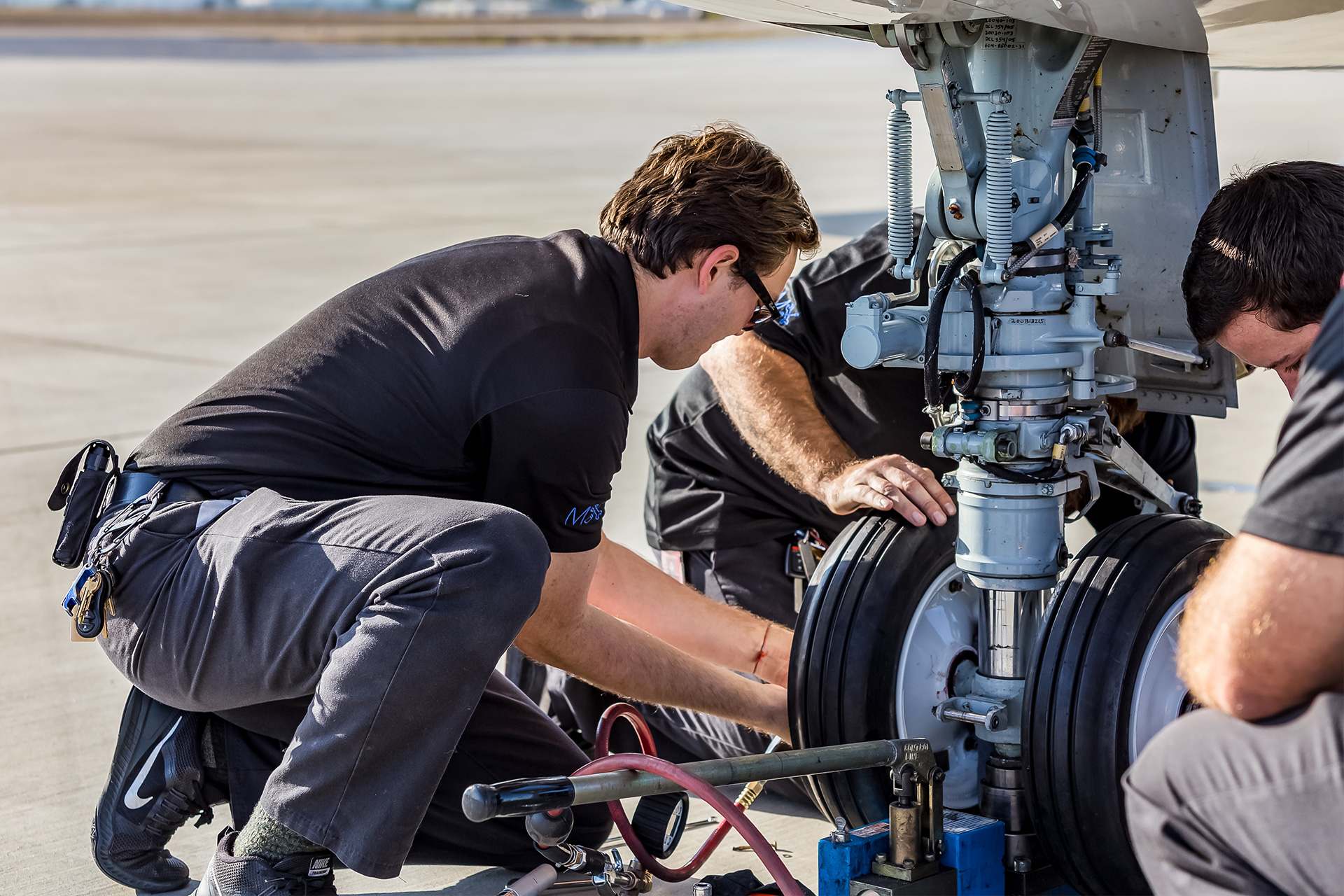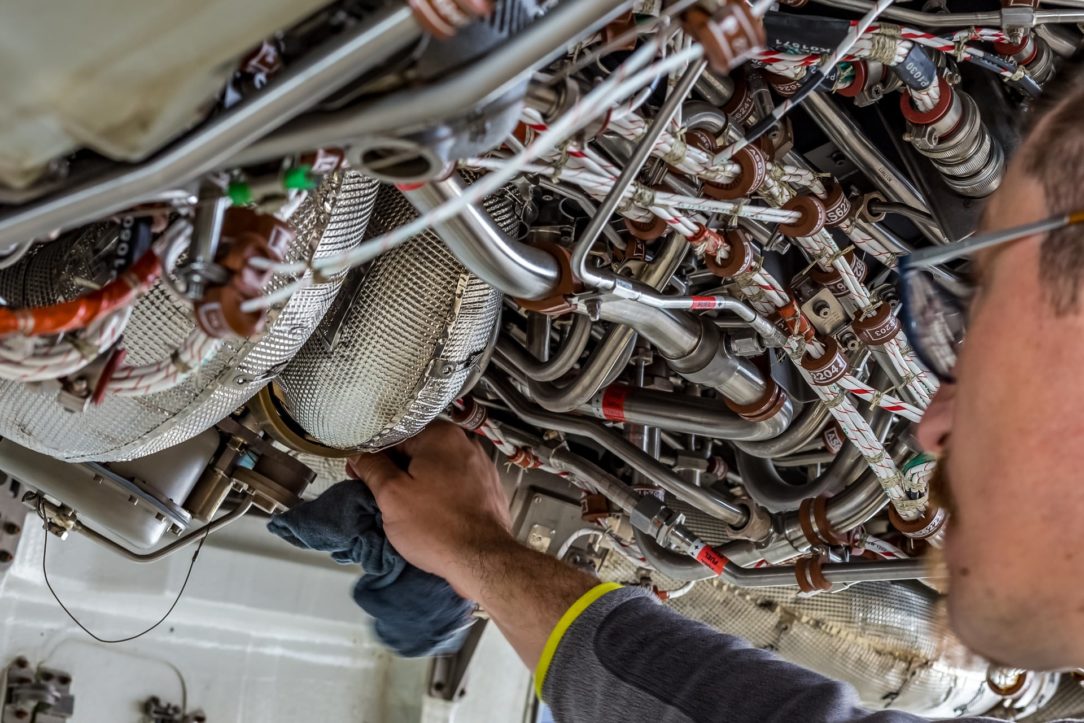hint: They could cost you thousands to fix
Let’s start with the most important: your aircraft’s maintenance manual will have all of the necessary steps to complete for various durations of ground time. The list below is only to serve as a reminder that, as healthy aircraft rarely see ground time such as nearly all of ours have experienced over the last several weeks, there are likely a host of items in your manual that you hadn’t considered. Consider them. Seriously.
Engine Preservation
Engines, by design, are meant to cycle and turn, strain and burn. An engine that sits idle has a propensity to develop issues, and costly ones, if they aren’t mitigated in advance of prolonged rest. If an engine has sat for weeks or (gasp) months, it may already be too late for preventative measures, so you should check your maintenance manuals ASAP to ensure you are in compliance with the requirements and recommendations for your particular model(s). The attitude that “I’ll just place the inlet and exhaust covers on and that should do” will likely lead to missing important steps like fuel and oil additives and desiccant packets, among many other steps.
Need help with this? Getting ready to fly again? Get in touch with ACI Jet, and learn about our new mobile Return to Service (mRTS) offer.
Critter Covers
Every pilot knows that an exposed pitot static tube can yield grave consequences. For prolonged sitting, either on the ramp or in a hangar, there are likely other parts of the aircraft that should be buttoned up to prevent critters of all shapes and sizes (and species and kingdom) from boarding your aircraft without prior authorization. Some of these areas are not common practice for a post-flight walkaround, as they may be less-than-accessible such as an APU exhaust, so it’s important to reference your maintenance manual(s) and/or ask a qualified repair station for guidance.
Tire Pressure
 Everyone knows you can’t takeoff or land without proper tire pressure. Did you know, however, that on many aircraft models you can’t taxi or even tow without a specified minimum tire pressure? The aircraft’s maintenance manual will spell out the details, but failure to maintain proper tire pressure while your aircraft is sitting idle may lead to what is a dangerously easy mistake to make, and a costly one. Moving the aircraft just an inch while the tire pressure is not at manufacture specs could mean completely tearing down the wheel, and adjacent wheel(s) in some cases, for a full inspection. By the way – as ACI Jet does major inspections and maintenance that can take several weeks, this is something we always check before an aircraft is moved after maintenance.
Everyone knows you can’t takeoff or land without proper tire pressure. Did you know, however, that on many aircraft models you can’t taxi or even tow without a specified minimum tire pressure? The aircraft’s maintenance manual will spell out the details, but failure to maintain proper tire pressure while your aircraft is sitting idle may lead to what is a dangerously easy mistake to make, and a costly one. Moving the aircraft just an inch while the tire pressure is not at manufacture specs could mean completely tearing down the wheel, and adjacent wheel(s) in some cases, for a full inspection. By the way – as ACI Jet does major inspections and maintenance that can take several weeks, this is something we always check before an aircraft is moved after maintenance.
Batteries
It’s common practice to disconnect your aircraft batteries for longer duration idle time on an aircraft. However, disconnecting the battery may not be enough as batteries self-discharge over time. This is natural, but it’s also preventable. If advisable by your aircraft’s maintenance manual, pulling the battery completely out of the aircraft before a long period of ramp/hangar time means 1) it’s easier to access for required charging intervals, and 2) it will be fully charged when it comes time to fire those engines up again! Keep in mind, aircraft batteries have specific storage and charging requirements, so please consult the component maintenance manual and/or your preferred MRO for guidance.
Calendar-Based Maintenance
This one gets more aircraft owners and operators than it should, but it’s an easy area of oversight (unless you’ve got a great computerized maintenance program and a Repair Station looking out for you, of course). Most aircraft maintenance intervals are established on a landing/cycle, flight hour, or calendar basis. However, some maintenance tasks can be tracked by any combination of these intervals and are limited by whichever occurs first. For example, an airframe inspection may be required after 12 months or 50 flight hours but will almost exclusively be performed when it reaches the number of flight hours, as aircraft rarely go that long without flying. These items, when an aircraft goes into prolonged rest, don’t go away, and forgetting to complete them may yield real headaches and loss of resale value months or years down the road. Don’t let it happen. Be sure to reference the approved aircraft maintenance program for your aircraft and/or article and follow it religiously to prevent any missed maintenance or inspection items.
Have anything else to add? We’d love to hear your recommendations.
As a reminder, your maintenance manuals will have all of the necessary procedures and specifications for your aircraft. The information above is only provided to help you ask the right questions. If you need more information about your own aircraft, reach out to ACI Jet’s maintenance, repair and overhaul team and they’ll point you in the right direction.




